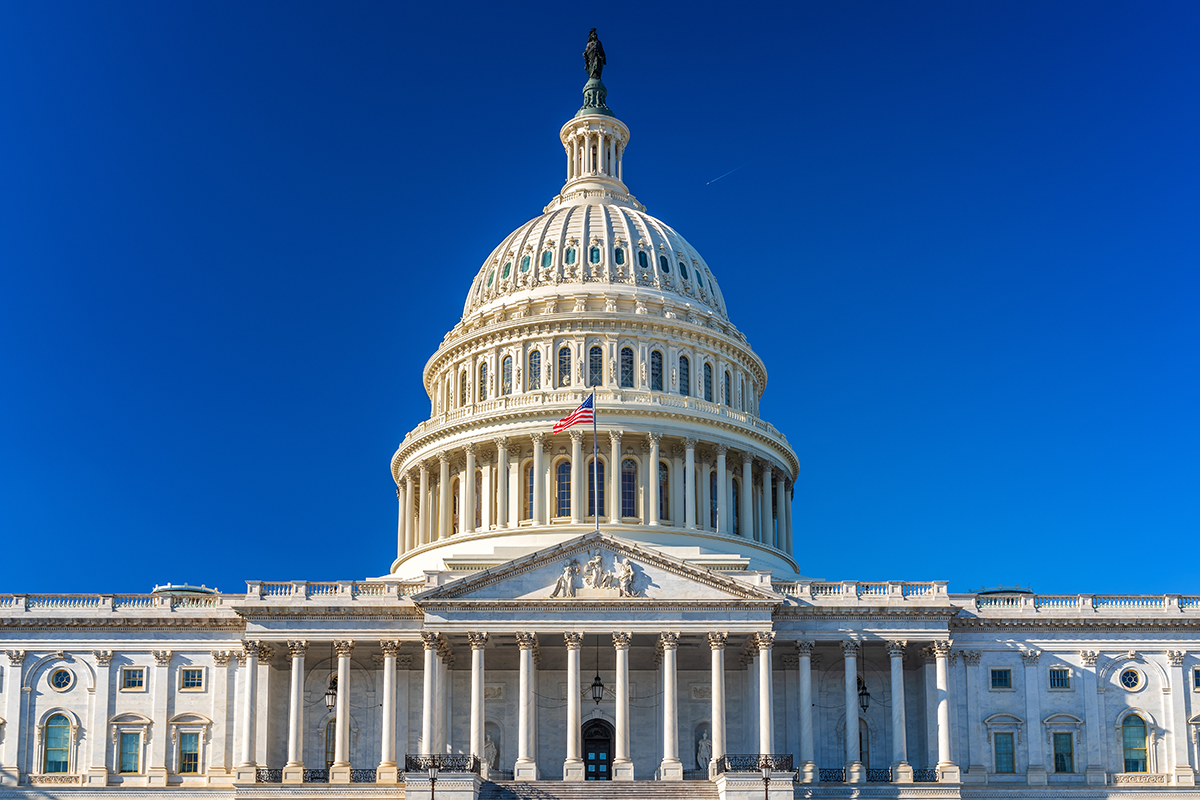SMACNA Comments on DOL Update to Davis-Bacon Regulations
SMACNA supports revisions to rules on determining the prevailing wage for federal construction projects.
 On March 18, 2022, DOL published a proposed rule to update regulations implementing the Davis-Bacon Act, which applies to federal and federally assisted construction projects. Advocating for rule changes for years, SMACNA requested feedback from its members and chapters on the specific proposals. Response to our request was excellent and SMACNA submitted lengthy comments. In addition, SMACNA took a lead role in drafting and submitting comments from the Construction Employers of America (CEA), a coalition of seven construction industry associations who employ building trades workers. SMACNA also cosigned a joint letter with SMART regarding the proposed changes.
On March 18, 2022, DOL published a proposed rule to update regulations implementing the Davis-Bacon Act, which applies to federal and federally assisted construction projects. Advocating for rule changes for years, SMACNA requested feedback from its members and chapters on the specific proposals. Response to our request was excellent and SMACNA submitted lengthy comments. In addition, SMACNA took a lead role in drafting and submitting comments from the Construction Employers of America (CEA), a coalition of seven construction industry associations who employ building trades workers. SMACNA also cosigned a joint letter with SMART regarding the proposed changes.
Background: The proposal revises definitions such as “site of the work” to include sites where prefabricated buildings are produced and “scope of work” to include energy infrastructure. These changes may lead to more small firms being required to comply with Davis-Bacon labor standards. The proposal also changes the methodology for determining the prevailing wage. DOL currently uses the average rate if a majority of workers do not receive the same wage rate. Under the proposed rule, if a majority of workers are not paid a particular wage, DOL will identify any wage rate that is paid to more than 30 percent of the workers as prevailing. If there is still no wage prevailing, the agency will revert to an average rate to determine prevailing wage. DOL also proposes to update non-union prevailing rates every three years to address out-of-date wage determinations.
SMACNA Endorses Action On Energy Tax Package, Extenders
In recent letters to both the House and Senate, SMACNA expressed its support for needed energy efficiency tax incentives as part of the still pending budget reconciliation efforts. These provisions would accelerate high-efficiency commercial, industrial and residential retrofits boosting energy efficiency, reducing carbon emissions and upgrading indoor air quality and would achieve significant energy and economic benefits, including avoiding 341 MMT of carbon emissions, securing $53.3 billion in energy cost savings, and creating 520,128 new jobs.
Infrastructure Law Funds Moving, Federal Guidance Released
The White House released a Bipartisan Infrastructure Law technical assistance guide to help state, local, tribal and territorial governments navigate, access and deploy infrastructure resources. Over 90 percent of the Bipartisan Infrastructure Law’s historic funding will be deployed by non-federal partners. In the past, many communities have lacked the resources to apply for and deploy transformative infrastructure opportunities. Items of interest:
- Workforce Funding: The Infrastructure Investment & Jobs Act’s workforce training and expansion support. One program is assisting communities and states with workforce training, including building an equitable, inclusive renewable energy economy by investing in union apprenticeship and pre-apprenticeship programs.
- Community Infrastructure Support: Designed to strengthen initiatives to increase access to union climate jobs for infrastructure workers in under-resourced areas.
- Airports: The Federal Aviation Administration (FAA) announced airports can use investments to upgrade critical infrastructure. FAA also announced a $1 billion notice of funding opportunity to modernize airport terminals across the country. The law invests $25 billion dollars in FAA programs over the next 5 years.
- Ports & Waterways: The U.S. Army Corps of Engineers (USACE) announced $17 billion to strengthen supply chains, improve waterways, and bolster climate resilience in fiscal year 2022 for over 500 projects across 52 states and territories.
- Energy Efficient Schools: DOE released a Request for Information (RFI) seeking public input on their $500 million grant program to make public schools more energy efficient to help deliver cleaner and healthier classrooms, libraries, cafeterias, playgrounds, and gyms where over millions of teachers teach, and tens of millions of students learn every day.
- Nuclear Power: DOE released guidance to seek applications and sealed bid submissions on the implementation of the Bipartisan Infrastructure Law’s $6 billion Civil Nuclear Credit Program. The nuclear credit program supports the continued operation of U.S. nuclear reactors, the nation’s largest source of clean power.
Since the Bipartisan Infrastructure Law was signed six months ago, more than $110 billion has been allocated to states and communities from formula and competitive programs for roads and highways, bridges, ports, airports, and water systems, with another nearly $100 billion in notices of funding availability for competitive programs now underway.
Buy America Standards In Infrastructure Investment and Jobs Act Delayed by DOT and HUD
The Infrastructure Investment and Jobs Act (IIJA) maintains and expands a number of Buy America requirements. It continues the requirement that iron and steel components for federal-aid highway or transit projects must be produced in the U.S. and applies to manufactured products, although the Federal Highway Administration continues a nationwide waiver, exempting some.
These new requirements were included as a part of the $1.2T Bipartisan Infrastructure Law in a provision entitled the “Build America, Buy America Act” (BABA) and are set to take effect on all federally funded construction contracts awarded on or after May 14, 2022. However, both the Department of Transportation (DOT) and the Department of Housing and Urban Development have issued temporary waivers delaying the expansion of Buy America requirements to certain construction materials, citing concerns about how they will properly implement the requirements without causing unnecessary supply chain and material shortage issues. Other agencies may consider doing so as well.
Published: July 6, 2022
IN THIS ISSUE
Essential Areas for Developing Construction Talent
By having a plan when it comes to workforce development, you can make an investment that equally benefits employers and employees.
Fleet Operations Strategies
Managing a fleet is a big part of a residential HVAC contractor’s business.
From Design to Build
The Central Sheet Metal team designs, fabricates and installs a grain elevator for a customer in Franklin, Indiana.
Indoor Environmental Quality Becomes Focus Area in Wake of Pandemic
HVAC contractors find they have a significant role to play in improving air quality in indoor spaces.
New OSHA “National Emphasis Program” Heats Up
Initiative will use “proactive outreach” and “compliance assistance” to reduce and prevent heat-related worker injuries and fatalities.
San Diego SMACNA Firm Finds Success With Unexpected BIM Partner
Subcontracting helps navigate short deadlines and fast paced projects.
SMACNA Comments on DOL Update to Davis-Bacon Regulations
SMACNA supports revisions to rules on determining the prevailing wage for federal construction projects.
Standardizing Processes to Save You Time
New emerging information products can assist contractors to better manage their workflow during the third-party certification process.
The Best of Both Worlds
Supplying ductwork to your fellow contractors is a strategic decision that can pay off during all phases of the construction cycle.
The Future of Welding
New laser technology improves efficiency, speed and intricacy.
Understanding Cyber Risk Quantification
Taking a moment to grasp your cyber vulnerabilities can provide you with an opportunity to protect your assets in a financially responsible manner.
Using Financial Ratios to Plan a Confident Future
Using this commonly overlooked forecasting tool can help you understand your company's financial preparedness.
Welcome New SMACNA Members
With Change Comes Opportunity
SMACNA President discusses how to remain flexible and adaptable during these uncertain and turbulent times.


